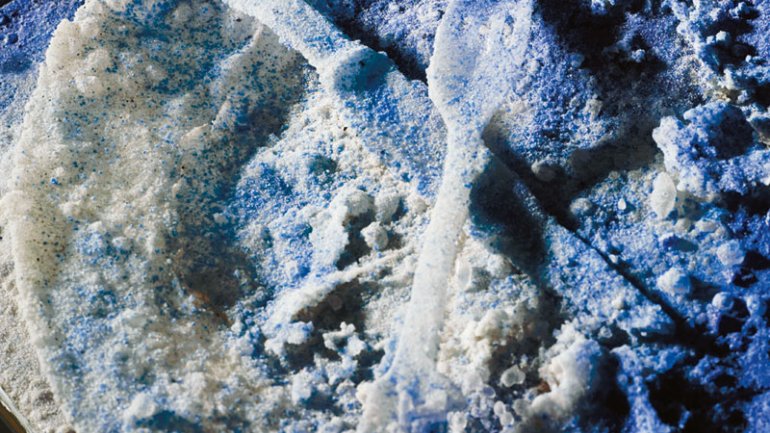The 9th Supper of Joan Crous
The 9th Supper of Joan Crous
Musée-Atelier du Verre
Cenae 9: L'Alchimie du Verre (The Alchemy of Glass) Joan Crous
Sars-Poteries, France
September 11 - December 1, 2008
The scene is spectral-a banquet table after a meal laden with plates, wine glasses, silverware and leftover food, but with color in gradations from white through deep sapphire blue through dark gray, and the whole setting covered with a grainy, ashy crust as if newly excavated from layers of earth and ravaged by time. Yet this is no relic of an ancient cataclysm but a recent work of glass art.
Joan Crous, a Spanish-born artist who lives and works in Italy, created the piece during a two-month residency at the Musée-Atelier Départemental du Verre (Glass Museum and Workshop) at Sars-Poteries in the north of France.
The aura of objects unearthed is intentional. He is inspired by the vestiges of objects preserved at Pompeii and Herculaneum by volcanic lava, and uses his own technique of "fossilization," using glass powder, or fritted glass. The work he created in Sars-Poteries is the ninth in the Cenae series, which grew out of the fact that he had frozen the leftovers of his own nuptial dinner and, looking at them later, liked the effectof frost. He subsequently devoted himself to the theme of a memorable, even sacred, repast (cenae is a reference to the Last Supper) frozen in glass.
Crous's Cenae 9: L'Alchimie du Verre was the result of a collaboration. He arranged a dinner at a local restaurant, l'Auberge Fleurie, and planned the menu with its chef, Benoît Cisecky. He invited local glassblower Olivier Juteau to create the place setting using models from 19th-century Sars-Poteries catalogs. Meanwhile, Crous and his assistant, Radovan Ragic, prepared his "pre-fusions," the glass powders of different granulations that would coat the table settings during the fossilization process.
The ceremonial dinner for 15 guests took place February 7 at the restaurant, after which the artist and his assistants removed the "dirty" plates, which held such leftovers as lobster claws and gingerbread, into an adjoining room set up as a small laboratory, in which these objects were coated with the mysterious glass powders in preparation for their firing in the kilns of the glass workshop. The completed work, a ghostly blue feast, was in the end many things-a homage to a village with a past and present glass tradition, a tribute to Louis Mériaux for his many contributions to the museum/workshop and a celebration of the artistic potential of a magical medium.
An illustrated catalog in French and English is $30 from the Museum and Glass Workshop, [email protected].

